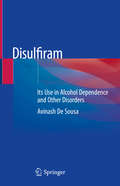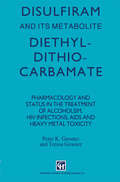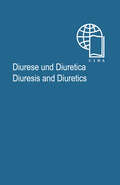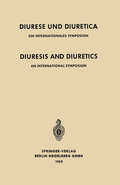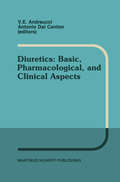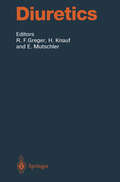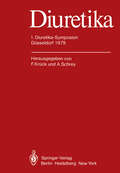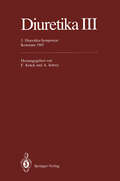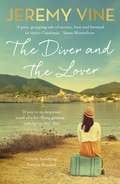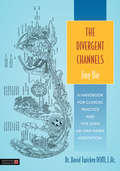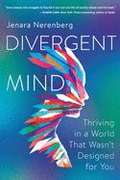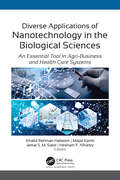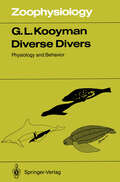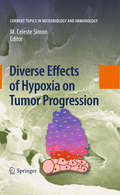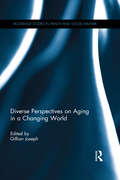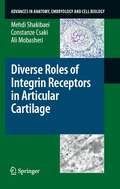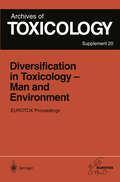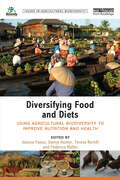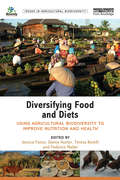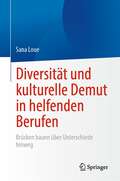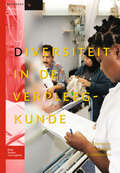- Table View
- List View
Disulfiram: Its Use in Alcohol Dependence and Other Disorders
by Avinash De SousaThis book focuses on the value of supervised Disulfiram therapy, highlighting the many potential and unique benefits of Disulfiram. One of the oldest drugs available for the long-term management of alcohol dependence, Disulfiram remains a viable treatment option for alcohol dependence and has been shown in recent studies to be more successful in treating patients with alcohol dependence than Naltrexone, Topiramate and Acamprosate. It is also useful in dual diagnosis patients and those with co-morbid cocaine and alcohol dependence. Although Disulfiram’s mechanism of action in alcohol dependence was long thought to be its effects as a psychological deterrent, more recent studies point to potential anti-craving effects as well. In dedicated chapters, the book reviews major clinical trials of Disulfiram spanning nearly 60 years, its historical aspects and discovery, side effects, treatment protocols and uses in the context of alcohol dependence. The book also discusses the use of Disulfiram across diverse populations along with monitoring for compliance and various adverse effects that may manifest. Further topics include Disulfiram implant therapy and the role of Disulfiram in the modern long-term pharmacotherapy of alcohol dependence, as well as the role of cognitive behavior therapy in enhancing the effects of Disulfiram and the emerging role of Disulfiram in treating cocaine dependence and pathological gambling. As such, the book offers a “one-stop” comprehensive guide to all aspects of Disulfiram therapy.
Disulfiram and its Metabolite, Diethyldithiocarbamate: Pharmacology and status in the treatment of alcoholism, HIV infections, AIDS and heavy metal toxicity
by P.K. GessnerThis book is aimed at those in the biomedical community that are interested in the therapeutic applications, pharmacology, biochemistry, toxicology and pharmacokinetics of the title compounds. Recent findings regarding the ability of diethyldithiocarbamate (ditiocarb, Imuthiol®) to delay the progression of HN infections and AIDS, the discovery of its potential as a rescue agent in cancer chemotherapy, and the identification of disulfiram (Antabuse®) regimens that allow alcoholics to achieve abstinence of many months' duration have made writing this book an exciting experience. At the same time the fact that the two drugs differ substantially in their pharmacological effects in spite of their easy interconvertibility has rendered the writing intellec tually challenging. Diethyldithiocarbamate, an agent seemingly less toxic than aspirin, rivals it in the multiplicity and diversity of its pharmacological proper ties. Notable among these are the manyfold potent immunostimulant effects, and though most of these involve effects on T -cells, the mechanism of diethyldithiocarbamate's action remains far from clear. The drug is also a potent chelator of heavy metals and this has led to a number of clinical applications. As might be expected, it inhibits several important enzymes. Further, it is one of the most effective radioprotective agents; it also protects organisms against a variety of toxic agents.
Diurese und Diuretica / Diuresis and Diuretics: Ein Internationales Symposion / An International Symposium
by Eberhard Buchborn K. D. BockVon H. SCHWIEGK Meine sehr verehrten Kolleginnen und Kollegen! Zunächst darf ich Ihnen allen herzlich danken, daß Sie meiner Einladung zu diesem Symposion gefolgt sind. Das gilt insbesondere für die Teilnehmer aus den Vereinigten Staaten, aus England, der Schweiz und Österreich, die die Mühe der weiten Reise nicht gescheut haben. In den letzten 10 Jahren haben unsere Kenntnisse über Phy siologie und Pathologie des Mineralstoffwechsels eine große Be reicherung erfahren. Diese moderne Entwicklung hat auch schon er hebliche praktische Bedeutung für das ärztliche Handeln gewonnen, insbesondere für die wichtigste Störung des Wasser-und Mineral stoffwechsels, die Ödemkrankheiten. Hier sind nicht nur für die wissenschaftliche Erkenntnis, sondern auch für die Therapie entscheidende Erfolge erzielt worden. Es wurden sowohl die Fak toren erkannt, die allen Ödemkrankheiten gemeinsam sind, als auch die besonderen Bedingungen der einzelnen klinischen Krank heitsbilder. Gemeinsam ist allen die gestörte Natriumbilanz, gemeinsam ist allen die Möglichkeit, durch verminderte Natrium zufuhr und vermehrte Natriumelimination die Ödeme therapeutisch zu beeinflussen. Die Wasserretention und -ausscheidung folgt der Natriumretention und -ausscheidung. Es kommt nicht, wie wir früher glaubten, primär auf die Steigerung der Wasserausschei dung, sondern auf die Erhöhung der Natriumausscheidung an. Damit ist das Problem des Wirkungsmechanismus der Diuretica in ein ganz neues Licht gerückt worden, da es auch hier nicht, wie wir früher glaubten, primär auf die Steigerung der Wasser ausscheidung, sondern auf die Erhöhung der Natriumelimination ankommt.
Diuresis and Diuretics / Diurese und Diuretica: An International Symposium Herrenchiemsee, June 17th–20th, 1959 Sponsored by CIBA / Ein Internationales Symposium Herrenchiemsee, 17.–20. Juni 1959 Veranstaltet mit Unterstützung der CIBA
by E. Buchborn K. D. BockDiuretics: Proceedings of the International Meeting on Diuretics, Sorrento, Italy, May 26–30, 1986 (Developments in Nephrology #18)
by V. E. Andreucci Antonia Dal CantonThe need for adequate means by which to improve urine output is very old. Even in the "Scuola Salernitana", the oldest medieval medical school in Western Europe, about 1000 years ago it was taught how to improve urine output. The list of known "diuretica" included herbs, plants, roots, vegetables, in particular asparagus, fennel and carrot. The first diuretic drugs, however, were mercurial compounds. Thus, calomel, mercurous chloride, was initially used as a diuretic in the sixteenth century by Paracelsus, being one of the ingredients of the so-called "Guy's Hospital pill". But calomel had a cathartic effect so that it was replaced by organic mercurial compounds. These diuretics were clearly toxic. After the discovery of the car bonic anhydrase, in the early 1930s, and the introduction of sulfanilamide as a chemotherapeutic agent, it was observed that this drug was inhibiting carbonic anhydrase in vitro and urinary acidification in vivo thereby causing metabolic acidosis; urine output, however, appeared to increase. Subsequent studies led to the synthesis of more potent analogs, in particular acetazolamide. Studies on car bonic anhydrase inhibitors led to the synthesis of benzothiadiazides which disclosed much less inactivating action on carbonic anhydrase and much more diuretic effect through an inhibition of tubular transport of sodium and chloride. Chlorothiazide was the first member of this class of diuretics. Thiazides are still used in clinical practice.
Diuretics (Handbook of Experimental Pharmacology #117)
by O. S. Better A. Busch J. Dorup H. Endou R. Greger W. G. Guder M. Hosoyamanda M. Hropot B. Kaissling T. R. Kleymann H. Knauf F. Lang H. J. Lang W. Möhrke E. Mutschler T. Netzer L. G. Palmer J. B. Puschett I. Rubinstein M. Schmolke F. Ullrich K. J. Ullrich H. Velazquez J. WinaverThe action of diuretics including cellular mechanisms of action, pharmacokinetics, and clinical usage, with much emphasis placed on the most recent findings on the pharmacodynamics of the respective drugs. During the past twenty-five years since volume 14 on Diuretica was published in the Handbook series, the cellular mechanisms of action of diuretics have slowly been unravelled. Today, the role of action within the target cells is known for most of the substances discussed. This has provided a new basis not only for the understanding of drug action but also for secondary effects and interactions. The book represents a comprehensive reference work on the diverse groups of diuretics which are among the most frequently prescribed medications.
Diuretika III: 3. Diuretika-Symposion Konstanz 1985
1m Oktober 1985 fand in Konstanz das 3. Diuretika-Symposion unter der wissenschaftlichen Leitung von F. Kruck, Bonn, statt, das sich an die vorausge gangenen Symposien in Dusseldorf (1979) und in Paris (1981), die unter der gleichen Leitung standen, anschlieBt. Die Verhandlungsberichte der ersten beiden Symposien sind in Buchform (Herausgeber: F. Kruck und A. Schrey) erschienen. Beim Konstanzer Symposion haben Wissenschaftler aus verschiedenen euro paischen Landern und aus den USA uber neueste Aspekte der Wirkungsmecha nismen, der Beeinflussung intrazellularer Elektrolytkonzentrationen, der Wech selwirkungen mit anderen Arzneimitteln, der Einflusse auf verschiedene Stoff wechselparameter und der extrarenalen Effekte diuretisch wirksamer Substan zen vorgetragen und diskutiert. Der Verhandlungsbericht gibt einen breiten Uberblick uber den neuesten Stand der Forschung und die Anwendung von Diuretika bei Hypertension und Odemzustanden. Die Diskussionen wurden durch einen Redaktionsstab uberar beitet und gestrafft. Der Verlag hat uns sachkundig beraten und ist in groBzugiger Weise unseren Wunsch en entgegengekommen. Die Herausgeber Inhaltsverzeichnis v Vorwort Referentenverzeichnis XI Einleitling 1 Neuere Aspekte der Pharmakokinetik von Diuretika E. MUTSCHLER, H. SPAHN und H. KNAUF 3 17 Diskussion ZelluHire Aspekte der Wirkung von Diuretika R.GREGER 19 Diskussion 26 Die Bedeutung des Tamm-Horsfall-Proteins fUr die tubulare Wirkung der Schleifendiuretika J.GREVEN 29 Diskussion 36 Untersuchungen zur extrarenalen Wirkung von Diuretika R. DUSING, R. PIETSCH, G. LANDSBERG, H. SCHERF, K. GLANZER, E. MUTSCHLER und H. J. KRAMER . . . . . . . . . . . . . . . . . 38 .
The Diver and The Lover: A novel of love, sacrifice and the art of obsession
by Jeremy Vine'A pacy, gripping tale of secrets, love and betrayal in 1950s Catalonia, written with skill and colour. It gave me enormous pleasure to read such a satisfying novel.' SANTA MONTEFIORE 'As colourful, rich and mesmerising as one of Dali's paintings, this absorbing, poignant rollercoaster of a read is utterly satisfying and will stay with you long after you've put it down.' PATRICIA SCANLAN 'a tale of intrigue, love, politics and scandal. Mixing fact and fiction The Diver and The Lover keeps up the pace and excitement to the very end.' JOAN BAKEWELL'This tale intrigued me and captured my imagination in equal measure. I loved being whisked back to the 1950s and felt the heat of the Spanish sun as I fell in love with the sisters' unique relationship. Be prepared to be taken on a dramatic journey confronting pain, tragedy and passion along the way ' SARA COX'We'll never look at one of the world's best known paintings in the same way again. [Jeremy Vine] has managed to weave truth and fiction together to bring us a most unexpected love story.' FIONA BRUCESoaked in sunlight, love and the mysteries surrounding a famous artist The Diver and the Lover is a novel inspired by true events.It is 1951 and sisters Ginny and Meredith have travelled from England to Spain in search of distraction and respite. The two wars have wreaked loss and deprivation upon the family and the spectre of Meredith's troubled childhood continues to haunt them. Their journey to the rugged peninsula of Catalonia promises hope and renewal. While there they discover the artist Salvador Dali is staying in nearby Port Lligat. Meredith is fascinated by modern art and longs to meet the famous surrealist. Dali is embarking on an ambitious new work, but his headstrong male model has refused to pose. A replacement is found, a young American waiter with whom Ginny has struck up a tentative acquaintance. The lives of the characters become entangled as family secrets, ego and the dangerous politics of Franco's Spain threaten to undo the fragile bonds that have been forged. A powerful story of love, sacrifice and the lengths we will go to for who - or what - we love.
The Divergent Channels - Jing Bie: A Handbook for Clinical Practice and Five Shen Nei Dan Inner Meditation
by David TwickenRooted in the Su Wen and Ling Shu, Dr. Twicken's book integrates Chinese and Taoist medical philosophy, theories, and principles to clearly demonstrate that the Divergent Channels are an essential aspect of the clinical practice of acupuncture. He takes a step-by-step approach to assist practitioners in 'working out' the channels, and shows how this versatile channel system can be used in any acupuncture treatment. Twicken also includes instruction on Five Shen Nei Dan inner meditation to help practitioners gain a more profound emotional and spiritual understanding. With case studies and reference to the classic texts throughout, this book provides a complete resource that will help clinicians understand and use the Divergent Channels in clinical practice. An accessible and comprehensive account of the Divergent Channel system, this book will be a valuable addition to the shelves of students and practitioners of acupuncture and Chinese medicine; taiji and qigong practitioners; and anyone with an interest in Taoist practice.
The Divergent Channels - Jing Bie: A Handbook for Clinical Practice and Five Shen Nei Dan Inner Meditation (PDF)
by David TwickenRooted in the Su Wen and Ling Shu, Dr. Twicken's book integrates Chinese and Taoist medical philosophy, theories, and principles to clearly demonstrate that the Divergent Channels are an essential aspect of the clinical practice of acupuncture. He takes a step-by-step approach to assist practitioners in 'working out' the channels, and shows how this versatile channel system can be used in any acupuncture treatment. Twicken also includes instruction on Five Shen Nei Dan inner meditation to help practitioners gain a more profound emotional and spiritual understanding. With case studies and reference to the classic texts throughout, this book provides a complete resource that will help clinicians understand and use the Divergent Channels in clinical practice. An accessible and comprehensive account of the Divergent Channel system, this book will be a valuable addition to the shelves of students and practitioners of acupuncture and Chinese medicine; taiji and qigong practitioners; and anyone with an interest in Taoist practice.
Divergent Mind: Thriving In A World That Wasn't Designed For You (PDF)
by Jenara NerenbergA paradigm-shifting study of neurodivergent women-those with ADHD, autism, synesthesia, high sensitivity, and sensory processing disorder-exploring why these traits are overlooked in women and how society benefits from allowing their unique strengths to flourish. As a successful Harvard and Berkeley-educated writer, entrepreneur, and devoted mother, Jenara Nerenberg was shocked to discover that her "symptoms"--only ever labeled as anxiety-- were considered autistic and ADHD. Being a journalist, she dove into the research and uncovered neurodiversity-a framework that moves away from pathologizing "abnormal" versus "normal" brains and instead recognizes the vast diversity of our mental makeups. When it comes to women, sensory processing differences are often overlooked, masked, or mistaken for something else entirely. Between a flawed system that focuses on diagnosing younger, male populations, and the fact that girls are conditioned from a young age to blend in and conform to gender expectations, women often don't learn about their neurological differences until they are adults, if at all. As a result, potentially millions live with undiagnosed or misdiagnosed neurodivergences, and the misidentification leads to depression, anxiety, low self-esteem, and shame. Meanwhile, we all miss out on the gifts their neurodivergent minds have to offer. Divergent Mind is a long-overdue, much-needed answer for women who have a deep sense that they are "different." Sharing real stories from women with high sensitivity, ADHD, autism, misophonia, dyslexia, SPD and more, Nerenberg explores how these brain variances present differently in women and dispels widely-held misconceptions (for example, it's not that autistic people lack sensitivity and empathy, they have an overwhelming excess of it). Nerenberg also offers us a path forward, describing practical changes in how we communicate, how we design our surroundings, and how we can better support divergent minds. When we allow our wide variety of brain makeups to flourish, we create a better tomorrow for us all.
Divergent Mind: Thriving In A World That Wasn't Designed For You (PDF)
by Jenara NerenbergA paradigm-shifting study of neurodivergent women—those with ADHD, autism, synesthesia, high sensitivity, and sensory processing disorder—exploring why these traits are overlooked in women and how society benefits from allowing their unique strengths to flourish.
Diverse Applications of Nanotechnology in the Biological Sciences: An Essential Tool in Agri-Business and Health Care Systems
by Khalid Rehman HakeemDiverse Applications of Nanotechnology in the Biological Sciences: An Essential Tool in Agri-Business and Health Care Systems explores the diverse roles that nanobiotechnology plays in the medical sciences, pharmacy, healthcare, and in plants and agriculture. Looking at the diverse applications of nanotechnology in the healthcare field, the chapter authors discuss its importance in drug delivery, biomedical imaging and medical diagnostics, and healthcare management. The volume emphasizes how nanomedicine can treat different types of cancers and can improve medical imaging for the diagnosis of different kinds of diseases, resulting in quicker and more accurate diagnosis and better treatment options. The volume delves into nanobiotechnology in plants and its application in nanofertilizers and nano-pesticides in agriculture. It also documents how agri-nanobiotechnology can be a tool for innovative green technology that can be applied for global food security, biodiversity, and climate change solutions. The themes of nanobiotechnology in medicine and in plants are merged in the chapter on the types and therapeutic effects of plant product-based nanomedicine for malignancies. The potential toxicity of nanoparticles in plants is also elucidated. This volume provides an insightful overview of nanobiotechnology in medicine and in plants and agriculture that will be valuable for researchers and scientists and faculty and students in the areas of nanobiotechnology, agriculture, plant molecular biology, and medicine and healthcare.
Diverse Applications of Nanotechnology in the Biological Sciences: An Essential Tool in Agri-Business and Health Care Systems
by Khalid Rehman Hakeem Majid Kamli Jamal S. M. Sabir Hesham F. AlharbyDiverse Applications of Nanotechnology in the Biological Sciences: An Essential Tool in Agri-Business and Health Care Systems explores the diverse roles that nanobiotechnology plays in the medical sciences, pharmacy, healthcare, and in plants and agriculture. Looking at the diverse applications of nanotechnology in the healthcare field, the chapter authors discuss its importance in drug delivery, biomedical imaging and medical diagnostics, and healthcare management. The volume emphasizes how nanomedicine can treat different types of cancers and can improve medical imaging for the diagnosis of different kinds of diseases, resulting in quicker and more accurate diagnosis and better treatment options. The volume delves into nanobiotechnology in plants and its application in nanofertilizers and nano-pesticides in agriculture. It also documents how agri-nanobiotechnology can be a tool for innovative green technology that can be applied for global food security, biodiversity, and climate change solutions. The themes of nanobiotechnology in medicine and in plants are merged in the chapter on the types and therapeutic effects of plant product-based nanomedicine for malignancies. The potential toxicity of nanoparticles in plants is also elucidated. This volume provides an insightful overview of nanobiotechnology in medicine and in plants and agriculture that will be valuable for researchers and scientists and faculty and students in the areas of nanobiotechnology, agriculture, plant molecular biology, and medicine and healthcare.
Diverse Divers: Physiology and behavior (Zoophysiology #23)
by Gerald L. KooymanThis book is not a conventional review of diving physiology. The coverage of the literature has been selective rather than en compassing, the emphasis has been on field studies rather than laboratory investigations, and the dive responses described are often discussed from the perspective of some of the flaws or weaknesses in the conclusions. Some of these points are of more historical interest to note how our concepts have evolved as we learn more about behavior and responses to natural diving in contrast to forced submersions in the laboratory. As a result there is a degree of evaluation of some experiments on my part that may seem obvious or controversial to the specialist. I have followed this planat times in order to aid the reader, who I hope is often an untergraduate or graduate stu dent, the nonspecialist, and the layman, in appreciating to some degree the level of dissatisfaction or skepticism about certain areas of research in diving physiology. In view of historical boundaries in vertebrate biology, the subject is of broad enough importance to catch the interest of a wide audience of readers if I have done my job well. For ex ample, of the major epochal transitions or events there have been in vertebrate history, three come immediately to mind: (1) The transition from aquatic to aerial respiration which ultimately led to a broad occupation of terrestrial habitats. (2) The development of endothermy.
Diverse Effects of Hypoxia on Tumor Progression (Current Topics in Microbiology and Immunology #345)
by M. Celeste Celeste SimonHypoxia, defined as reduced oxygen tension, is a common physiological phenomenon in both normal embryonic development and malignancy progression. Although severe hypoxia is generally toxic for both normal tissue and tumors, neoplastic cells gradually adapt to prolonged hypoxia though additional genetic and genomic changes with a net result that hypoxia promotes tumor progression and therapeutic resistance. Hypoxia promotes cancer progression by regulating various aspects of cancer biology, including radiotherapy resistance, metabolism, angiogenesis and invasion/migration
Diverse Perspectives on Aging in a Changing World (Routledge Studies in Health and Social Welfare)
by Gillian JosephFocusing on under-researched aspects of social, economic and political change, this volume offers fresh insights into aging, older people and their families. It combines an international and interdisciplinary approach. Chapters explore the contexts in which family roles, institutional practices, public policies and social and cultural discourses evolve, connecting analyses of aging issues and policy development with sound research practices, as well as previously-ignored gaps in professional practice. Topics covered include politics and policy, health and social care, culture and migration, urban and rural sociology, gender studies, technology and economics. The book will be of particular interest to students and researchers in gerontology, community development, geography and population studies, along with researchers and professionals in physiotherapy, nursing and social work.
Diverse Perspectives on Aging in a Changing World (Routledge Studies in Health and Social Welfare)
by Gillian JosephFocusing on under-researched aspects of social, economic and political change, this volume offers fresh insights into aging, older people and their families. It combines an international and interdisciplinary approach. Chapters explore the contexts in which family roles, institutional practices, public policies and social and cultural discourses evolve, connecting analyses of aging issues and policy development with sound research practices, as well as previously-ignored gaps in professional practice. Topics covered include politics and policy, health and social care, culture and migration, urban and rural sociology, gender studies, technology and economics. The book will be of particular interest to students and researchers in gerontology, community development, geography and population studies, along with researchers and professionals in physiotherapy, nursing and social work.
Diverse Roles of Integrin Receptors in Articular Cartilage (Advances in Anatomy, Embryology and Cell Biology #197)
by Mehdi Shakibaei Constanze Csaki Ali MobasheriDiversification in Toxicology — Man and Environment: Proceedings of the 1997 EUROTOX Congress Meeting Held in Århus, Denmark, June 25–28, 1997 (Archives of Toxicology #20)
by Jürg P. Seiler Judith L. Autrup Herman AutrupThis volume contains the main papers presented at the 1997 EUROTOX Congress, Århus, Denmark, 24-28 June 1997. Diversification in toxicology is seen as the application of basic science to such diverse areas as man and his environment. The pressing issues which have been dealt with not only include reproductive effects of environmental chemicals ("xenoestrogens"), but also receptor-mediated toxic responses, new frontiers in human and ecological toxicology, chemoprevention of cancer and molecular approaches in toxicological research. The practical and ethical facets of toxicology, e.g. ecotoxicological risk assessment, biomarkers of exposure, complex chemical mixtures as well as animal welfare and the ethics of animal experimentation, are also treated.
Diversifying Food and Diets: Using Agricultural Biodiversity to Improve Nutrition and Health (Issues in Agricultural Biodiversity)
by Jessica Fanzo Danny Hunter Teresa Borelli Federico MatteiCurrently 868 million people are undernourished and 195 million children under five years of age are stunted. At the same time, over 1 billion people are overweight and obese in both the developed and developing world. Diseases previously associated with affluence, such as cancer, diabetes and cardio-vascular disease, are on the rise. Food system-based approaches to addressing these problems that could enhance food availability and diet quality through local production and agricultural biodiversity often fall outside the traditional scope of nutrition, and have been under-researched. As a consequence, there remains insufficient evidence to support well-defined, scalable agricultural biodiversity interventions that can be linked to improvements in nutrition outcomes. Agricultural biodiversity is important for food and nutritional security, as a safeguard against hunger, a source of nutrients for improved dietary diversity and quality, and strengthening local food systems and environmental sustainability. This book explores the current state of knowledge on the role of agricultural biodiversity in improving diets, nutrition and food security. Using examples and case studies from around the globe, the book explores current strategies for improving nutrition and diets and identifies key research and implementation gaps that need to be addressed to successfully promote the better use of agricultural biodiversity for rural and urban populations and societies in transition.
Diversifying Food and Diets: Using Agricultural Biodiversity to Improve Nutrition and Health (Issues in Agricultural Biodiversity)
by Jessica Fanzo Danny Hunter Teresa Borelli Federico MatteiCurrently 868 million people are undernourished and 195 million children under five years of age are stunted. At the same time, over 1 billion people are overweight and obese in both the developed and developing world. Diseases previously associated with affluence, such as cancer, diabetes and cardio-vascular disease, are on the rise. Food system-based approaches to addressing these problems that could enhance food availability and diet quality through local production and agricultural biodiversity often fall outside the traditional scope of nutrition, and have been under-researched. As a consequence, there remains insufficient evidence to support well-defined, scalable agricultural biodiversity interventions that can be linked to improvements in nutrition outcomes. Agricultural biodiversity is important for food and nutritional security, as a safeguard against hunger, a source of nutrients for improved dietary diversity and quality, and strengthening local food systems and environmental sustainability. This book explores the current state of knowledge on the role of agricultural biodiversity in improving diets, nutrition and food security. Using examples and case studies from around the globe, the book explores current strategies for improving nutrition and diets and identifies key research and implementation gaps that need to be addressed to successfully promote the better use of agricultural biodiversity for rural and urban populations and societies in transition.
Diversität und kulturelle Demut in helfenden Berufen: Brücken bauen über Unterschiede hinweg
by Sana LoueAllzu oft hat die Ausbildung in kultureller Kompetenz zu einer unbeabsichtigten Ausgrenzung einiger Personen und Gruppen und zur Verstärkung bestehender Stereotypen geführt. Dieser Text erforscht das Konzept der kulturellen Demut, das einen spannenden Weg nach vorne für diejenigen bietet, die in helfenden Berufen tätig sind. Im Gegensatz zu kultureller Kompetenz fordert kulturelle Demut den Einzelnen heraus, sich auf einen lebenslangen Kurs der Selbstprüfung und des transformativen Lernens einzulassen, der es ihm ermöglicht, authentischer mit Klienten, Patienten, Kollegen und anderen umzugehen. Das Buch zeichnet unser Verständnis von und unsere Reaktionen auf Vielfalt und Integration im Laufe der Zeit nach, wobei der Schwerpunkt auf den Vereinigten Staaten liegt.Zu den untersuchten Themen gehören:Wir und die Anderen: Die Konstruktion von KategorienKulturelle Kompetenz als Ansatz zum Verstehen von UnterschiedenTransformatives Lernen durch kulturelle BescheidenheitFörderung von kultureller Demut im institutionellen/organisatorischen KontextKulturelle Demut und die helfende FachkraftDas Buch zeigt anhand von Beispielen, wie das Konzept der kulturellen Bescheidenheit auf institutioneller Ebene und im Kontext individueller Interaktionen, z. B. zwischen einem Gesundheitsdienstleister oder Therapeuten und einem Klienten, umgesetzt werden kann.Diversität, kulturelle Demut und die helfenden Berufe: Building Bridges Across Difference" ist eine unverzichtbare Lektüre für Gesundheitsberufe (Krankenpflege, Medizin), Sozialarbeit, Psychologie, Kunsttherapie und andere helfende Berufe.
Diversiteit in de verpleegkunde (Basiswerken Verpleging en Verzorging)
by A. Kuckert and P. EsterhuizenVerpleegkundigen staan dicht bij mensen. Inlevingsvermogen en mensenkennis zijn onmisbaar voor goede observaties, klinisch redeneren of voor het kunnen geven van steun. Hoe herken je als verpleegkundige diversiteit en hoe geef je dat een goede plek in je handelen? Dit boek maakt de complexiteit van het onderwerp ‘diversiteit’ zichtbaar en biedt tegelijkertijd handvatten. Het boek laat zien hoe belangrijk de dialoog met patiënten is en hoe een verpleegkundige kennis over groepskenmerken kan combineren met het oog hebben voor unieke eigenschappen. Op het eerste oog homogene groepen patiënten kunnen veel diversiteit bevatten. De auteurs benaderen het onderwerp ‘diversiteit’ vanuit verschillende perspectieven. De complexiteit van het onderwerp wordt hierdoor goed zichtbaar. Dat diversiteit centraal staat in dit boek is niet alleen te zien aan de titel, maar ook aan de diversiteit in de opbouw van hoofdstukken. Elk hoofdstuk kan op zichzelf gelezen worden. Drie hoofdstukken zijn in de Engelse taal geschreven. Niet alleen de opbouw en de taal van de hoofdstukken is divers, maar ook de auteurs zelf verschillen in leeftijd, geslacht, gezinssituatie, opleiding (verpleegkunde, culturele antropologie, sociologie, etc.) en woonplaats (Nederland, Duitsland, Groot-Brittannië, Amerika).
